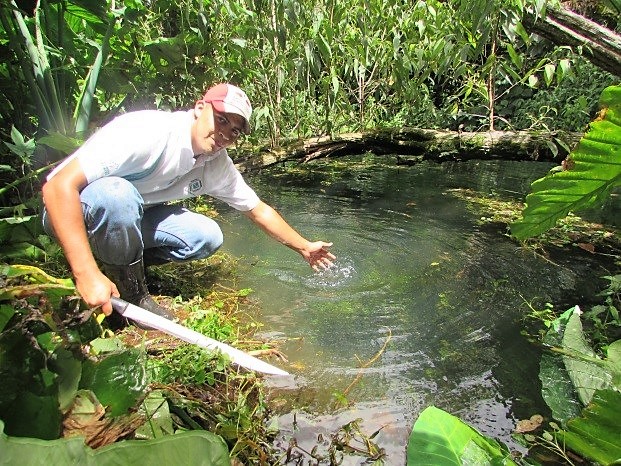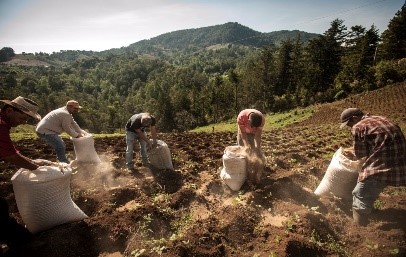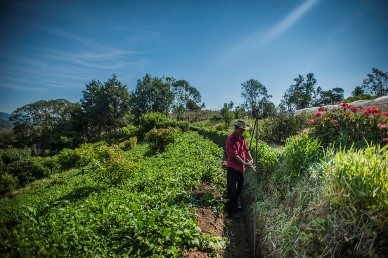



The EbA measures implemented in the sub-basin focused on water and soil ecosystem services, on productive diversification and on mitigating the impacts of climate change on crops and community assets. Together with >100 producers from the upper part of the sub-basin, fruit and timber trees were introduced into agroforestry systems bordering 7 water sources, and organic agriculture was encouraged, allowing families to diversify their income and reduce the vulnerability of their crops, productive infrastructure and housing, which are affected by strong winds. This, in combination with soil and water conservation practices (hillside irrigation ditches, non-burning and crop residue incorporation), has helped to reduce soil erosion caused by extreme rainfall, as well as improved moisture retention in crops, soil fertility, and water infiltration and capture in the area. The EbA measures not only generate more resilient agro-ecosystems, but also increase the availability of water, which benefits >400 families in the sub-basin. These actions have raised awareness of the need for ecosystem and adaptive approaches to territorial management in the face of climate change.
- Improving the state of soils is not only a way to ensure increased productivity, but also in the medium term, helps to reduce the tendency for migratory agriculture, as it ensures that families can work the same plots for many years. This influential factor favours the uptake of soil conservation practices by families.
- Plan Trifinio began years ago a forest incentives scheme for forest owners with the aim of contributing to their protection and with that, to water capture in the basin.
- The staggered planting of crops with fruit and timber trees is a very effective way to raise awareness of the benefits of associating trees with crops. It makes it possible to tangibly see how agroforestry systems can help to address the impacts of climate change and diversify family income.
- The implementation of agroforestry systems and soil conservation practices should allow crop diversification and increases in income to accrue in a short period (using basic grains, avocado, etc.) and not only over the medium and long term (use of pine trees and cypress). For this to materilize requires joint planning between the producer and the technical advisor.
- It is important to take into account land tenure where water sources are located. Municipalities commonly own only the water springs and not the lands that surround them. This entails working with the owners of the forests and lots that surround the water sources, to protect and/or restore those lands and allow the installation of pipes to provide communities with water.